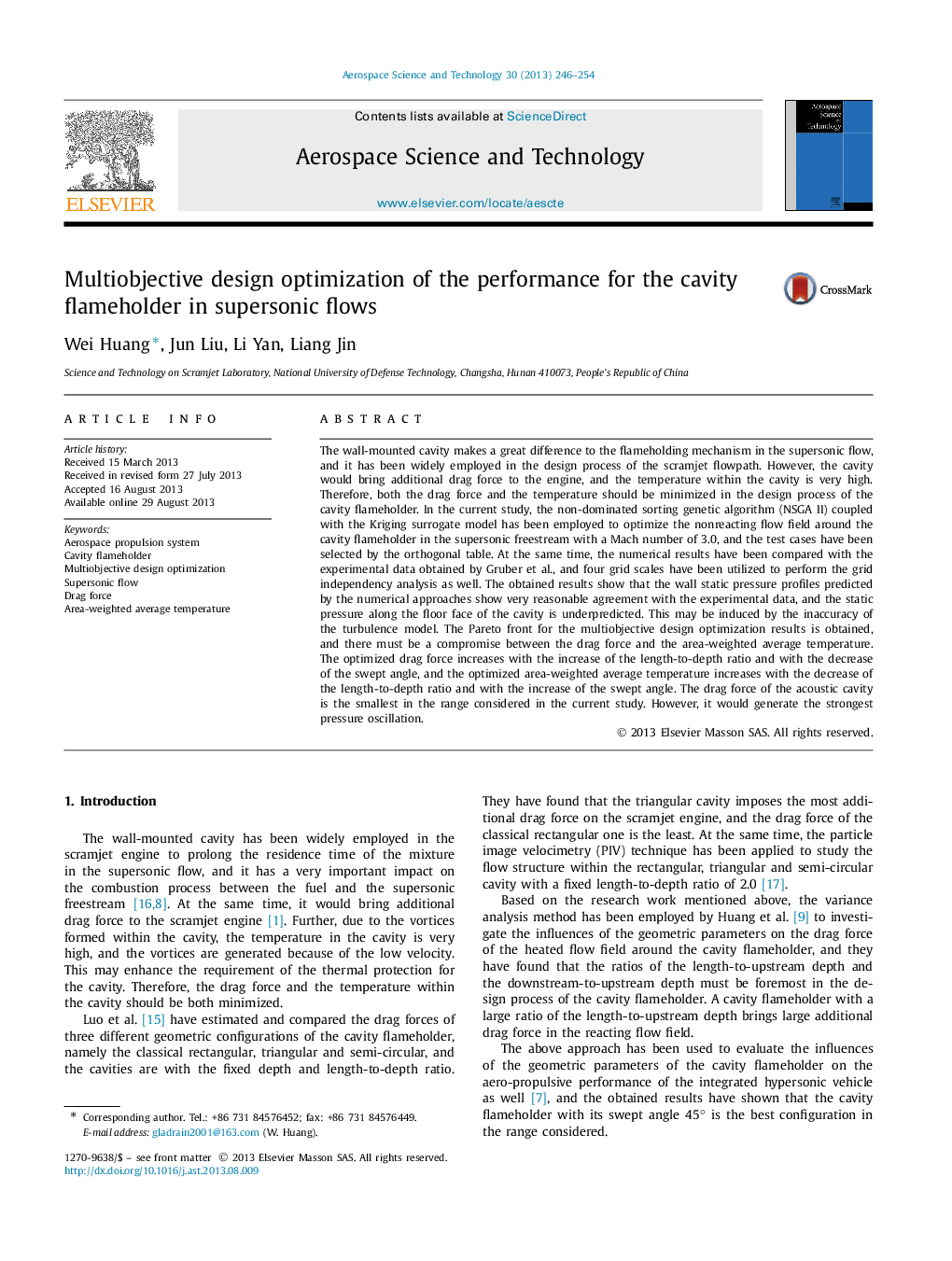| Article ID | Journal | Published Year | Pages | File Type |
|---|---|---|---|---|
| 1718166 | Aerospace Science and Technology | 2013 | 9 Pages |
The wall-mounted cavity makes a great difference to the flameholding mechanism in the supersonic flow, and it has been widely employed in the design process of the scramjet flowpath. However, the cavity would bring additional drag force to the engine, and the temperature within the cavity is very high. Therefore, both the drag force and the temperature should be minimized in the design process of the cavity flameholder. In the current study, the non-dominated sorting genetic algorithm (NSGA II) coupled with the Kriging surrogate model has been employed to optimize the nonreacting flow field around the cavity flameholder in the supersonic freestream with a Mach number of 3.0, and the test cases have been selected by the orthogonal table. At the same time, the numerical results have been compared with the experimental data obtained by Gruber et al., and four grid scales have been utilized to perform the grid independency analysis as well. The obtained results show that the wall static pressure profiles predicted by the numerical approaches show very reasonable agreement with the experimental data, and the static pressure along the floor face of the cavity is underpredicted. This may be induced by the inaccuracy of the turbulence model. The Pareto front for the multiobjective design optimization results is obtained, and there must be a compromise between the drag force and the area-weighted average temperature. The optimized drag force increases with the increase of the length-to-depth ratio and with the decrease of the swept angle, and the optimized area-weighted average temperature increases with the decrease of the length-to-depth ratio and with the increase of the swept angle. The drag force of the acoustic cavity is the smallest in the range considered in the current study. However, it would generate the strongest pressure oscillation.
